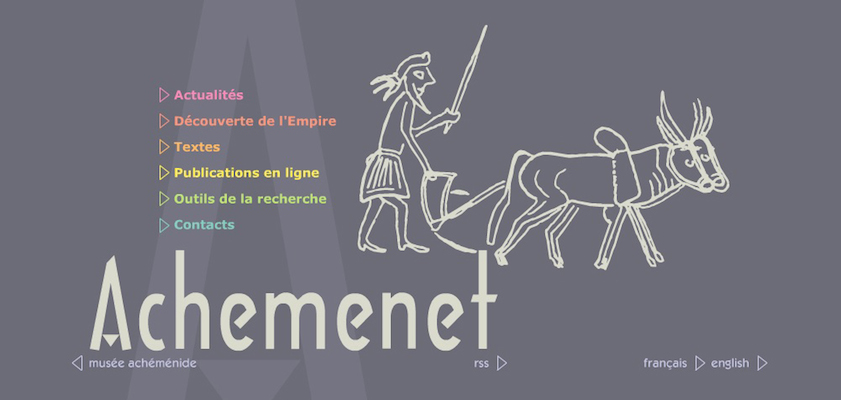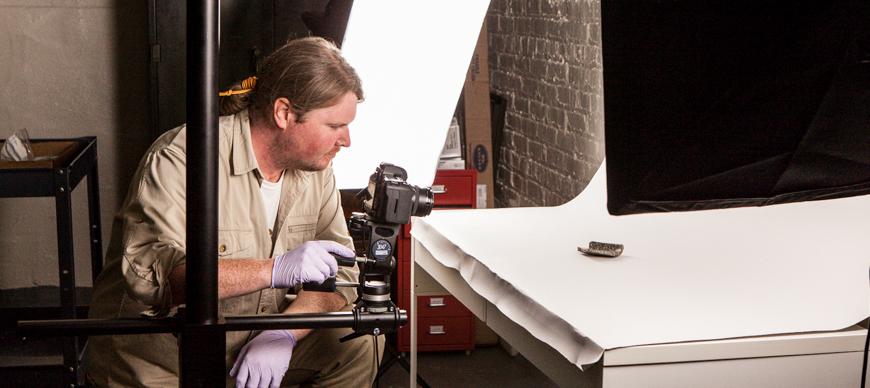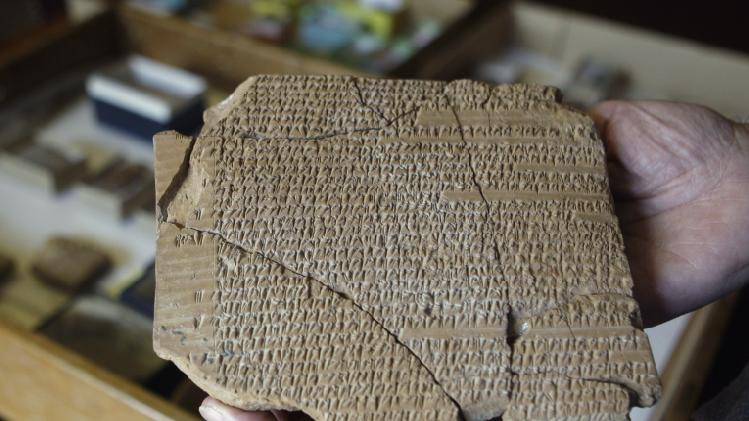Achemenet
he Achaemenid or Persian empire dominated much of the modern Middle East and Central Asia from the 6th century BC down to its conquest by Alexander the Great in the 320s BC. It was characterised by vast linguistic and cultural diversity because of the many regions it absorbed. This predominantly French language website (with some German translations), produced by the Collège de France in association with the Ministère de l’Education nationale and the Ministère de la Recherche, is a major electronic resource for the study of the history, literature and archaeology of the Persian Empire and surrounding areas. The aim of this programme is to collect and disseminate a variety of web resources (ancient texts, museum objects, drawings, photographs, accounts of travelers, scientific contributions, etc.) within a historic spacetime, the Middle East of the Indus to the Mediterranean, under the rule of the Achaemenid Persians from 550-330 BC Today, these resources are posted on two sites: achemenet.com, which brings together the corpus of ancient texts and important scientific contributions, and MAVI (virtual interactive Achaemenid Museum) at museum-achemenet.college-de-france.fr, all of which provides more than 8,000 photos of works held in fifteen museums around the world.
Online resources include: the Journal of Achaemenid Studies and Researches (JASR); Achaemenid Research on Texts and Archaeology (ARTA); the Bulletin d’Histoire Achéménide, a major source of bibliographic information on recent Achaemenid studies; NABU, a series of scholarly papers; a major corpus of cuneiform Persian texts arranged by editor which will eventually be fully searchable by date, reign, find spot and text type. In addition, the site provides a rich mine of information on archaeological sites (with maps, plans and images and links to external websites), as well as corpora of Egyptian, Anatolian and Aramaic texts and sections on coinage and glyptic. This is an indispensable source of information for advanced students and researchers working on the history and archaeology of the ancient Near East in the middle of the first millennium BC.
The Louvre was one of the first partners of the international Achemenet programme, launched by the Chair of History and Civilization of the Achaemenid World and the Empire of Alexander at the College de France in 2000. The collaboration of the Louvre in this programme adds more than four hundred Achaemenid works from its collections. The Oriental Institute of the University of Chicago intends to create an inventory and a series of new photographs of the objects of Achaemenid date and culture in the collections of the Oriental Institute Museum, to be presented on the Achemenet website and in the Oriental Institute’s online collections database. This collaboration began in April 2014 and the one-year goal is to provide comprehensive photographic documentation of several hundred objects and an inventory of additional objects from the museum.




